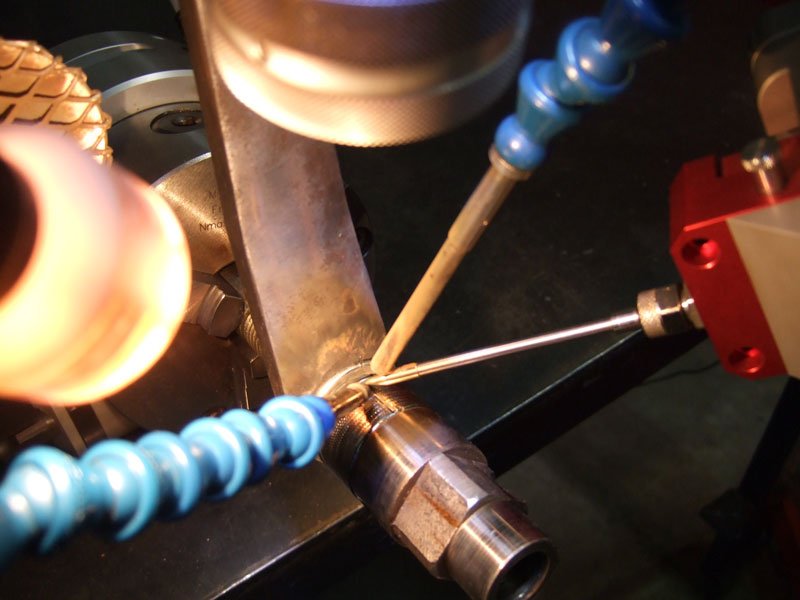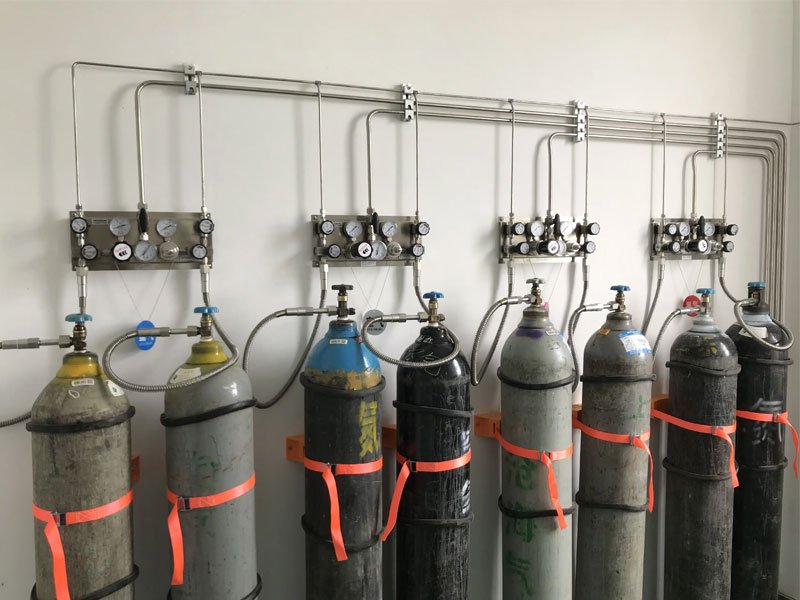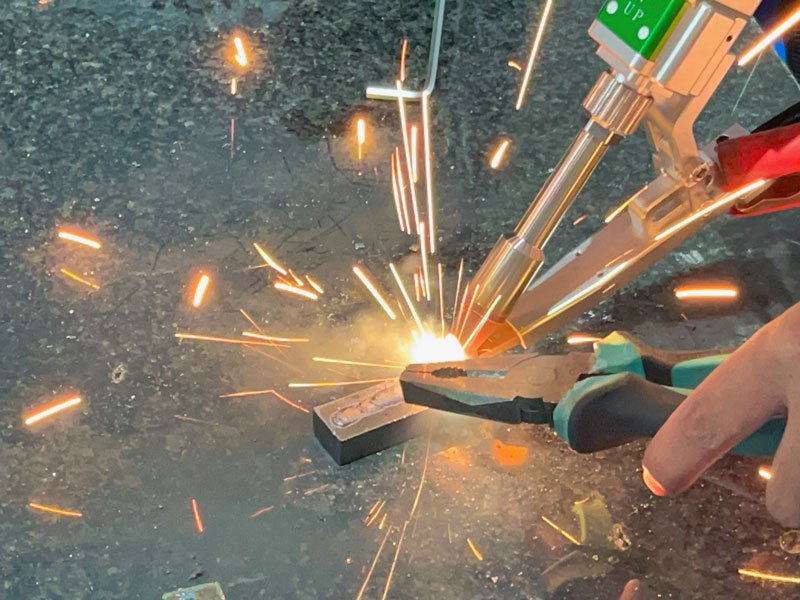Welding technology is the most basic process in industrial fabrication. It plays a very important role in the connection between metal materials. The welding process requires protective gas, which plays an important role in ensuring the quality and integrity of the weld. This article will Tell you an in depth understanding of quoi is a shielding gas in welding.

What is welding
Welding is the technique of joining metals by melting the workpiece and adding filler material to form a strong bond. There are many methods on the market, the common ones are arc welding, MIG, TIG and laser welding, but most of them require a shielding gas to protect the welding pool from atmospheric pollutants.
What is Shielding Gas?
Shielding gas is a protective gas that prevents atmospheric contamination of the molten weld pool during the welding process and is critical to creating high-quality, defect-free welds. Gases protect the welding area from atmospheric oxygen, nitrogen, and hydrogen, which can cause porosity, brittleness, or other welding defects.
Types of shielding gas
- Inert Gases: These gases do not react with molten metal and provide a stable atmosphere. Argon and helium are prime examples, commonly used for their effectiveness in various welding applications.
- Reactive gases: Unlike inert gases, reactive gases can react with molten metal, affecting the mechanics of the welding process and the properties of the final weld. Carbon dioxide and oxygen are often used alone or mixed with inert gases.
What does shielding gas do in welding
- The shielding gas protects the workpiece from oxidation during the welding process and protects the molten pool from external gases, which may cause welding defects.
- Shielding gas can affect the welding arc characteristics, affecting weld bead shape, penetration and overall welding quality.
- Shielding gas adjusts the welding speed and helps stabilize the arc for smoother, cleaner welds.
How to choose the right shielding gas
Selection of the appropriate shielding gas depends on the welding process, the welding material and the required welding performance. Argon is widely used for its versatility and excellent results in TIG welding, while mixtures of argon and carbon dioxide are popular for MIG welding because of its balance of welding quality and cost-effectiveness.

Challenges and Solutions for Using Barrier Gases
Common challenges include gas instabilities, which can lead to porosity and excessive spatter. Proper gas flow rates, correct equipment setup and regular maintenance can alleviate these issues and ensure consistent protection of the weld pool.
The future of shielding gas technology
The field of welding gases is constantly evolving with new mixtures and technologies to improve welding results, increase efficiency and reduce environmental impact. Gas mixtures are optimized for specific applications, giving welders greater flexibility and control.
What gas to use for welding
Welding gases are divided into three categories: combustion-supporting gas, combustible gas and protective gas.
Combustion-supporting gas
Combustion-supporting gas refers to oxygen, which is a colorless, odorless, tasteless, non-toxic gas that will not burn. The molecular formula of oxygen is O2, which accounts for 21% of the air. Honey is larger than air. At one atmospheric pressure, quand the temperature is as low as -182.96°C, it turns into light blue liquid oxygen that is easy to evaporate. The liquefied air oxygen production method is commonly used in industry to produce oxygen. The oxygen purity used for gas welding and gas cutting should be at least 99.2%.
Combustible gas
Acetylene
Acetylene is the flammable gas that forms an oxygen-acetylene flame during welding. It is colorless. Acetylene is a hydrocarbon with a molecular formula of C2H2. It is less dense than air and can be dissolved in liquids such as water and acetone.
Acetylene itself is explosive. For example, quand the pressure is 1.5 atmospheres and the temperature reaches 580-600°C, it may explode. The hydrolysis of calcium carbide is an exothermic reaction, so attention must be paid to heat dissipation and cooling. Long-term contact of acetylene with silver and pure copper should be avoided to avoid the formation of explosive substances such as silver acetylene and copper acetylene. If acetylene is mixed with air or oxygen in a certain proportion, it will become an explosive gas. Therefore, you must pay absolute attention to safety quand using acetylene.
Liquefied petroleum gas
Liquefied petroleum gas is a by-product of cracked petroleum. Its main components are propane, butane, propylene, butene and a small amount of ethane, ethylene and other hydrocarbons. The above mixture is in a gaseous state at normal temperature and 1 atmosphere, but as long as a small pressure is added (generally 0.8-1.5MPa), it becomes liquid and can be stored and transported in cylinders.
Liquefied petroleum gas is heavier than air and has a slight odor. There are differences in the tools used and operating techniques. Because LPG has a smaller range of explosive gases quand mixed with air or oxygen, it is safer than using acetylene.
Protective gas
Argon
Argon is a colorless, odorless monatomic inert gas. It does not react chemically with metals during the welding process and does not dissolve in metals. It is a commonly used protective gas for gas electric welding. The content of argon in the air is 0.935% (volume). It is a by-product of fractionated oxygen production. The purity of industrial pure argon can reach 99.99%, which can meet the needs of welding work. To improve welding quality, argon is often mixed with another (or two) gases in appropriate proportions.
Carbon dioxide
Carbon dioxide gas is a colorless, odorless, and tasteless gas with the molecular formula CO2. Under standard conditions, its density is 1.5 times that of air. It has a slightly sour taste quand dissolved in water. It is very stable at room temperature, but almost completely decomposes at high temperatures (around 5000K).
CO2 can become liquid quand compressed and will vaporize at room temperature. CO2 used in industry is all liquid. 1kg liquid CO2 can be gasified into 509L standard gaseous CO2. Quand cooled without pressure, CO2 gas will turn directly into a solid state (dry ice). As the temperature rises, dry ice turns directly into a gas without going through a liquid transition. Because dry ice condenses moisture from the air, it is not suitable for welding. CO2 gas is mainly a by-product of breweries and chemical plants.
Since liquid CO2 can dissolve about 0.05% of water by mass, it must be dried quand used as a protective gas for carbon dioxide gas welding.
CO2 is oxidizing at high temperatures, so the welding wire used should have enough deoxidizing elements.
Helium
Helium is an odorless, colorless, non-toxic gas that does not chemically react with any elements or compounds during the welding process. Helium is typically used in shielded areas. Helium is mainly used as a protective gas quand welding non-ferrous metals. Helium and other mixed gases are also very effective quand welding some ferrous metals and their alloys.
The most suitable welding methods using helium are gas tungsten arc welding and gas metal arc welding.
Mixed composition
In the early days of gas-shielded welding, a single gas was mainly used. With the continuous advancement of welding technology, in scientific research laboratories and production practices, it has been found that using one gas as the main body and appropriately adding a certain amount of another or two gases can refine the droplets, reduce the spatter, and improve the melting process. Deeper, improved arc stability and increased arc temperature can be improved.

What shielding gas is used for mig welding
Mig welding, metal inert gas shielded welding, is a common welding technology. Its characteristic is to use inert gas (or active gas) to protect the welding wire and welding area to prevent oxygen from entering the welding area and avoid the occurrence of defects such as oxidation, pores, and slag inclusions. The selection and use of shielding gas plays a vital role in the quality and performance of the welding process.
Protective gas includes argon, mixed gas, and reactive gas. The types and characteristics are different and should be selected and configured according to actual needs. Quand selecting and using shielding gas, attention should be paid to controlling gas flow, uniformity and other factors to obtain high-quality welds and good welding effects.
Why is an inert shielding gas required for GTA welding
Prevent oxidation: During non-melting electrode welding, arc heating will cause the welding area to be in a high-temperature and high-energy state, which can easily react with oxygen in the air to form oxides, thus adversely affecting the quality of the weld. The use of inert gas can effectively prevent oxygen from contacting the molten pool and reduce the formation of oxides.
Maintain a stable arc: The chemical properties of the inert gas are very stable and will not react with the arc or produce chemical changes. Therefore, a stable gas environment can be formed in the welding area to maintain the stability of the arc welding process.
Improve weld quality: Inert gas can not only prevent oxidation, but also help the welding area cool down quickly, thereby effectively controlling grain coarsening and the size of the heat-affected zone during the welding process, and improving weld quality.
Using inert gas as a protective gas is an important method in non-melting electrode welding. It can effectively protect the welding area from harmful gases such as oxygen and nitrogen in the air, thereby improving welding quality and efficiency.
FAQ
Quoi shielding gas for aluminum
- Argon: Use pure argon as a protective gas to prevent the welding area from being oxidized by air, thereby obtaining excellent welding results. This protective gas forms an argon gas layer on the weld that is not in contact with the air to protect the welding area.
- Pure nitrogen: Using pure nitrogen as a protective gas is also an option, but its protective effect is poor.
- Nitrogen-containing gas mixture: argon gas is mixed with a small amount of nitrogen, which is commonly used quand welding aluminum.
Can you weld without shielding gas
Direct contact with air will cause H, O and other gases in the air to contact the welding pool, causing H and O elements to enter the weld, causing defects such as pores and cracks.
Quoi shielding gas is used for tig welding
All protective gases must be inert and must not contain any active ingredients.
Why is an inert shielding gas required for gta welding
Prevent oxidation: During non-melting electrode welding, arc heating will cause the welding area to be in a high-temperature and high-energy state, which can easily react with oxygen in the air to form oxides, thus adversely affecting the quality of the weld. The use of inert gas can effectively prevent oxygen from contacting the molten pool and reduce the formation of oxides.
Maintain a stable arc: The chemical properties of the inert gas are very stable and will not react with the arc or produce chemical changes. It can form a stable gas environment in the welding area and maintain the stability of the arc welding process.
